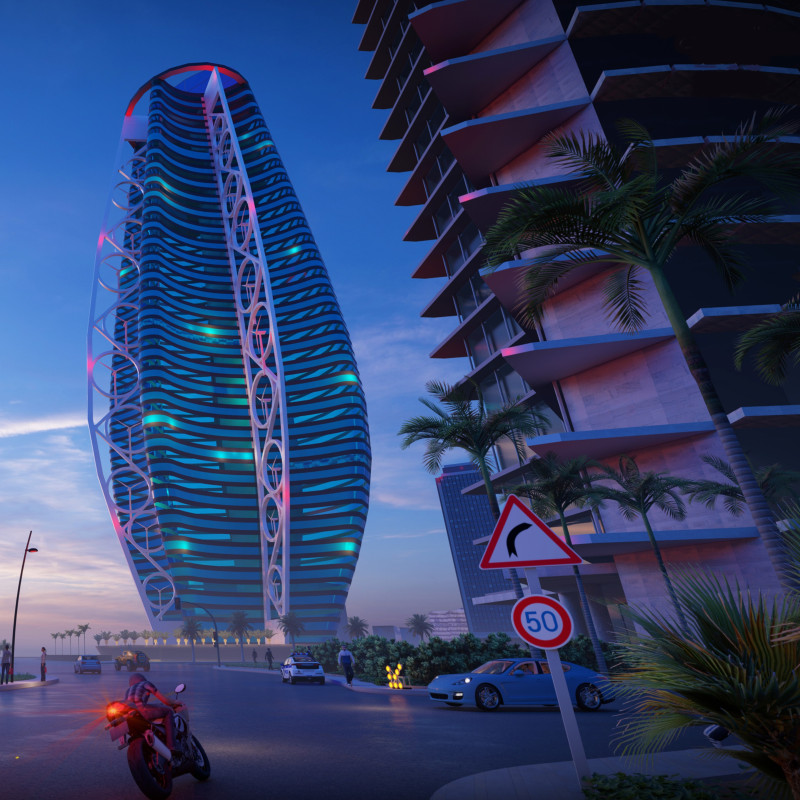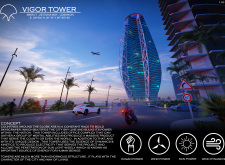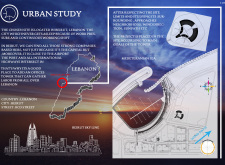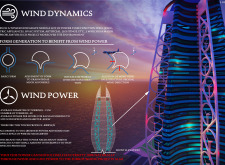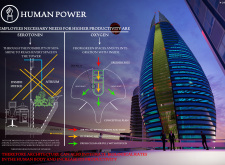5 key facts about this project
Vigor Tower embodies a commitment to sustainability and efficiency in architecture. It features a dynamic form that captures natural elements, such as wind and sunlight, to enhance energy performance. The combination of transparency through glass facades and structural elements made from steel and concrete emphasizes both visual appeal and structural integrity.
Sustainable and Adaptive Design
What distinguishes Vigor Tower from typical office buildings is its integration of renewable energy sources and biophilic design principles. The inclusion of wind turbines is a notable feature, strategically located to harness wind energy effectively and contribute to the building’s electrical needs. This approach reduces reliance on conventional energy sources and promotes an environmentally responsible architectural model.
Additionally, the use of solar panels complements the structure's energy strategy, optimizing natural light while generating power. The design anticipates the effects of climate and weather patterns, using advanced building techniques to create a resilient structure. Vigor Tower’s ability to adapt not only to environmental factors but also to the needs of its occupants is a crucial aspect of its overall functionality.
Human-Centric Approach
The architectural layout prioritizes occupant well-being and productivity through thoughtful design decisions. Natural light permeates workspaces, contributing to a healthier environment and reducing energy consumption during daylight hours. The integration of greenery within and around the tower establishes a connection between the built and natural environments, which is increasingly recognized as vital in modern architecture.
Moreover, Vigor Tower serves as a communal space, designed to foster interaction and collaboration among its users. The strategic placement of common areas and amenities encourages social engagement, reinforcing the tower’s role as more than just a workspace.
Readers interested in exploring Vigor Tower’s architectural plans, sections, and overall design concepts are encouraged to delve deeper into the project presentation. This examination will provide additional insights into the innovative architectural ideas and unique approaches that define Vigor Tower.


